Heading Out
After lunch, we returned to our hotel and our room was available. It was easily one of the nicest rooms we’d stayed in, with a massive bathroom and shower, and a large common area with a king-sized bed, dresser, TV, couch and desk. Our third floor vantage point overlooked the hotel pool and some hills in the distance, and the slider led to a small balcony I hoped we’d have an opportunity to use.
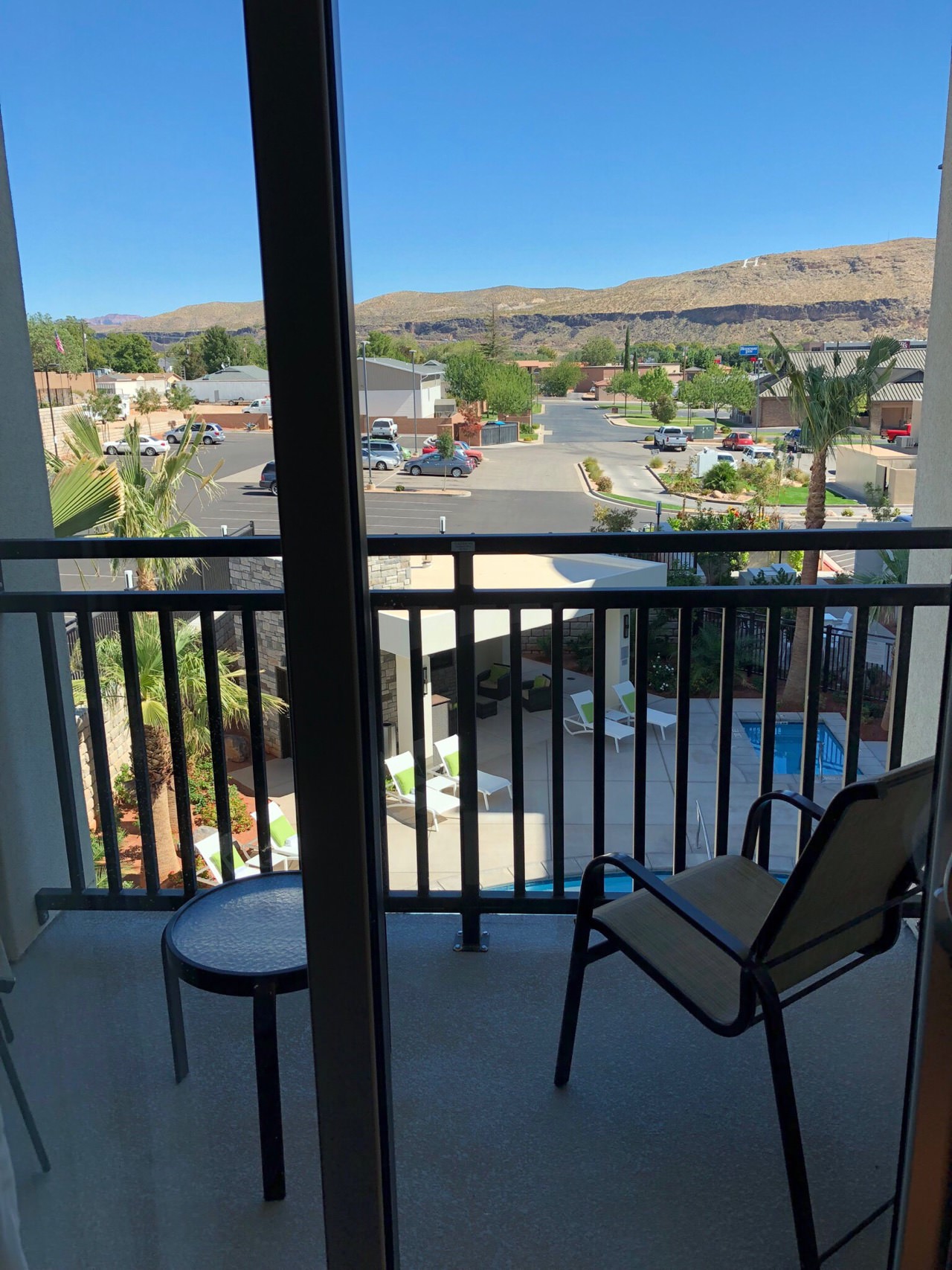
We didn’t come to Hurricane to stay in a hotel, so we quickly transported our suitcases and backpacks from the car to the room, anxious to gather what we’d need for our first experience in Zion. Our backpacks stocked, water bladders filled, and clothes changed, we returned to the car and headed toward the park.
As we drove down Highway 9, we passed the towns of La Verkin, Virgin and Rockville, separated by open swaths of desert. I was surprised by the homes I saw. They were not insubstantial—this was clearly not an inexpensive area to live.
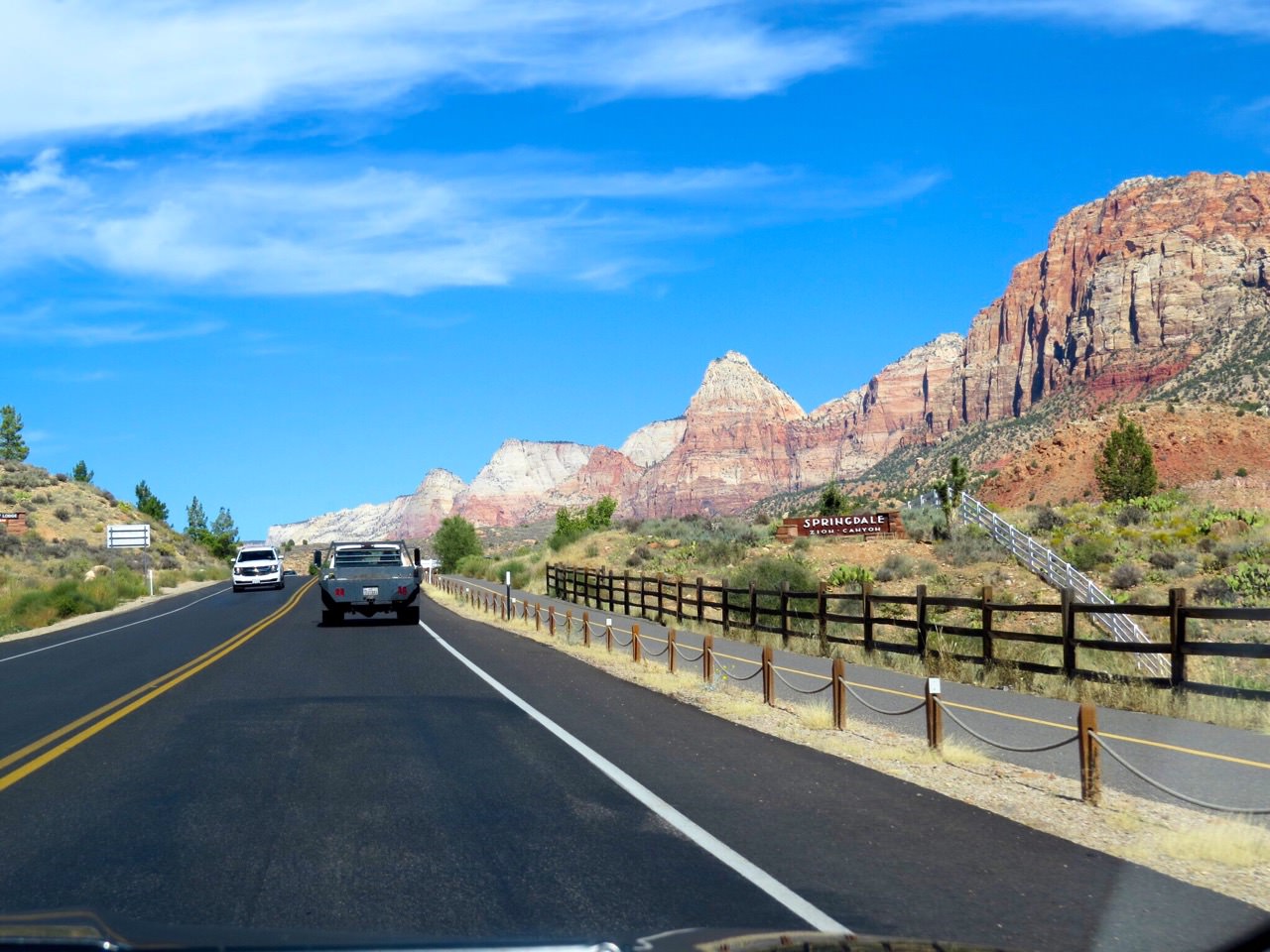
The town of Springdale serves as the gateway to the park, and it is positioned at the mouth of the canyon with large cliffs rising up on either side. It was a clearly a tourist community but with an upscale feel. The restaurants we passed had interesting names like “The Spotted Dog Cafe” and “Whiptail Grill.” The trinket shops were mixed in with stores selling gear from brands such as Merrel, Lowa, Salomon, Patagonia, and Arc’Teryx, among others. Cars were parked along the road nearly to the outskirts of town, and groups of people could be seen waiting at the numbered stations for the Sprindale to Zion shuttle system. Several people were walking along the sidwalks, outfitted with hiking boots and poles, hats, jackets, and backpacks. It was easy to tell who had been to the park already by the amount of dust that covered them.
We purchased the annual National Parks pass at the entry station and inquired about parking; I had read that unless one arrived early in the morning, parking within Zion itself would be very difficult. The ranger at the station told us that several folks had left recently and he suggested giving it a shot. We were lucky and found a recently vacated spot near the entry to the main lot. We were here! We were in Zion National Park!
The air was warm and dry as we exited the car. Today’s excursion would not see us venture too far off the main path, so we removed the jackets and rain pants from our packs. I smiled as I slid my feet firmly into my hiking boots, securing the laces and reminiscing about the origins of the dust and scuff marks that covered the leather.
We made our way across the parking lot, passing clumps of sagebrush, until we reached the visitor center. A short distance away we found the waiting area for the park shuttle and entered the line.
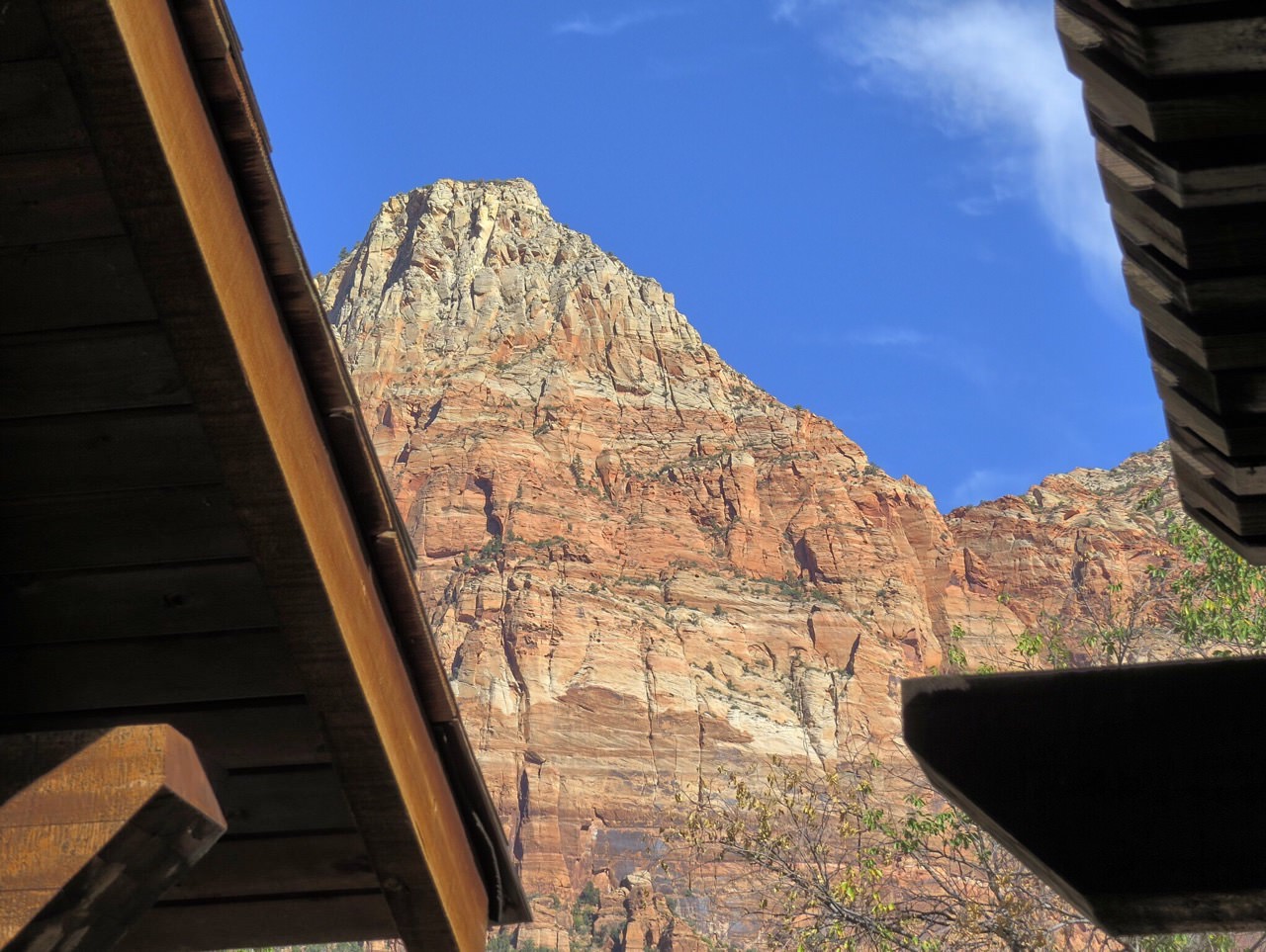
Our wait was relatively short, and we boarded the shuttle after about fifteen minutes. We learned that we were there during the shoulder season, and that as recently as two weeks before our trip the crowds were 2-3 times as large (and even worse in the summer). I would not have enjoyed waiting in line in weather that can exceed 100°, and I privately thanked the Lonely Planet and other anonymous authors that recommended an October visit.
The shuttle drivers provided some basic information about the park via their own commentary and pre-recorded narrations, and after about 40 minutes we arrived at the last stop, the Temple of Sinawava. It was time to begin our first foray into Zion: The Riverside walk.
Riverside Walk
The Riverside Walk was exactly that—a two-mile round-trip paved path that parallels the north fork of the Virgin River. We immediately noticed how much cooler it was now that we were out of the sun and near the 40° river. (The sign for this walk actually called that out, and indicated this area has its own microclimate.) The canyon walls were closer, but it was hard to gain perspective due to the height of the rock around us.
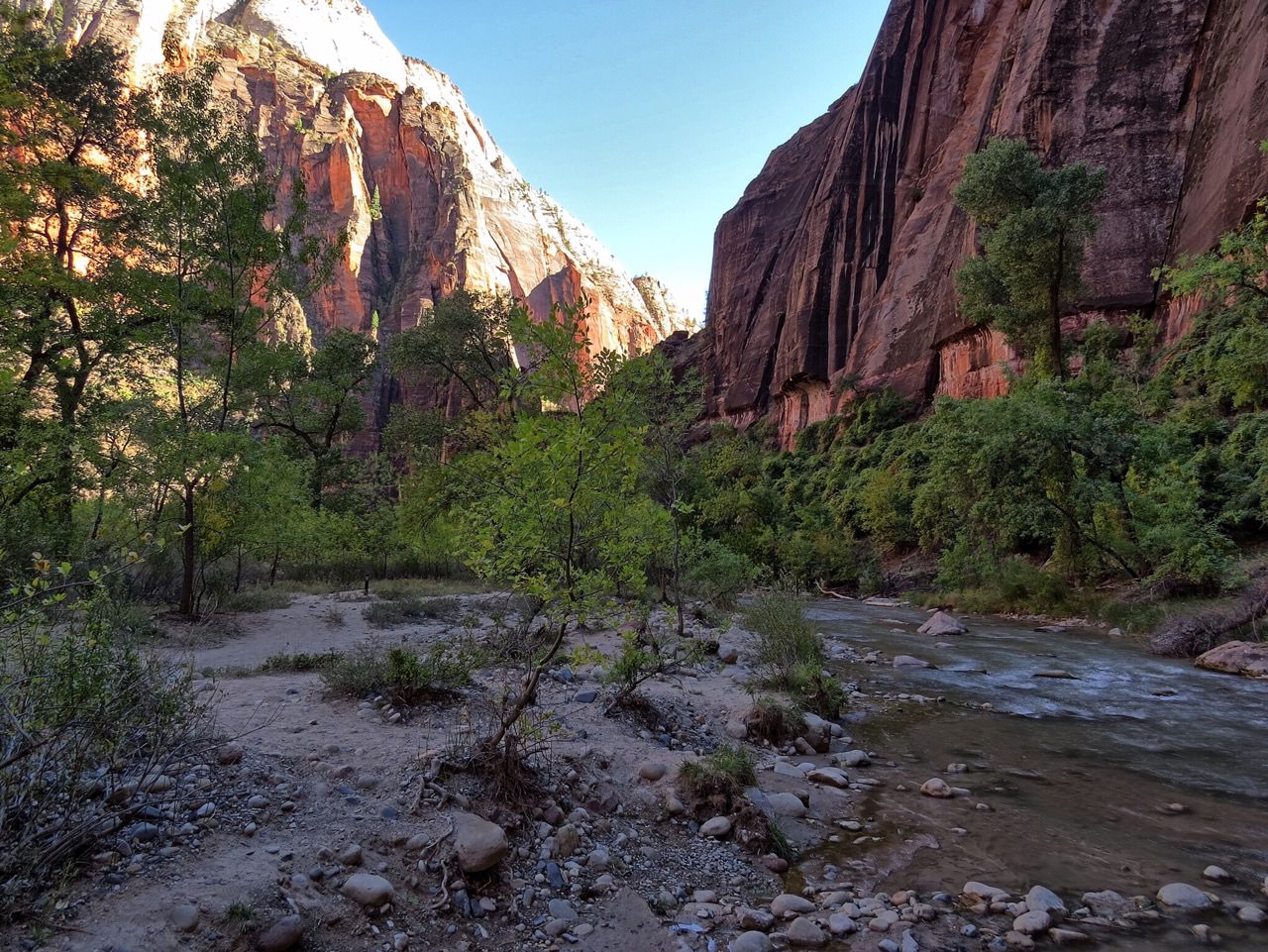
Shortly after we started, I heard a noise to my right and stopped to look around. I spotted a mule deer buck on a rock about 30 feet away, eating the leaves of a Cottonwood tree. I grabbed a few pictures before moving on.
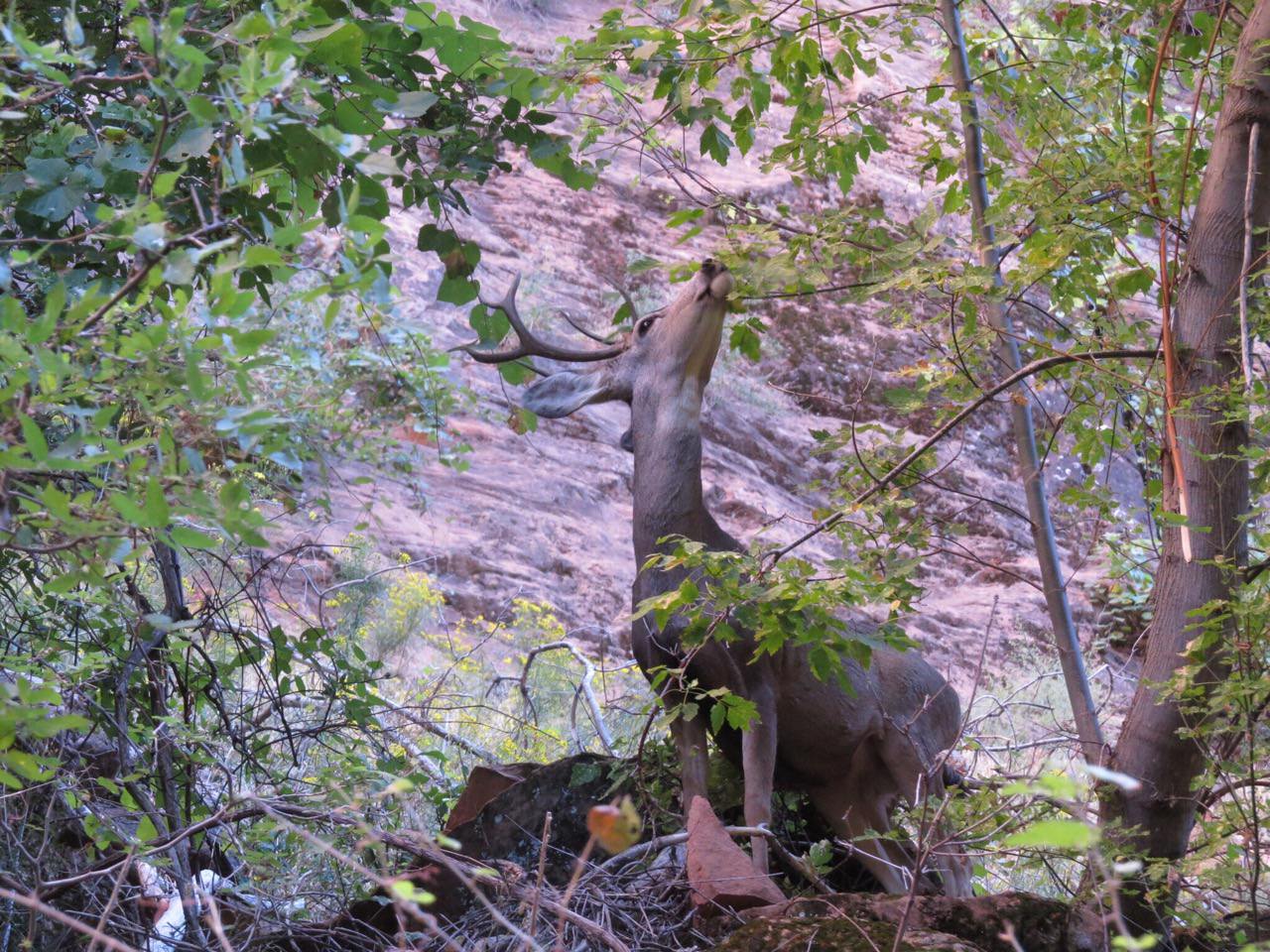
Further down was an overfed squirrel, seeking food from those passing by. It was actually a fairly sad sight, with his little legs barely protruding from his large, tubular body. There are many signs on the shuttles and at the visitor center imploring guests to not feed the animals, but that never seems to be enough. The allure of having a cute, furry animal eating from your hand or digging in your pack appears to be more important than the welfare of that animal.
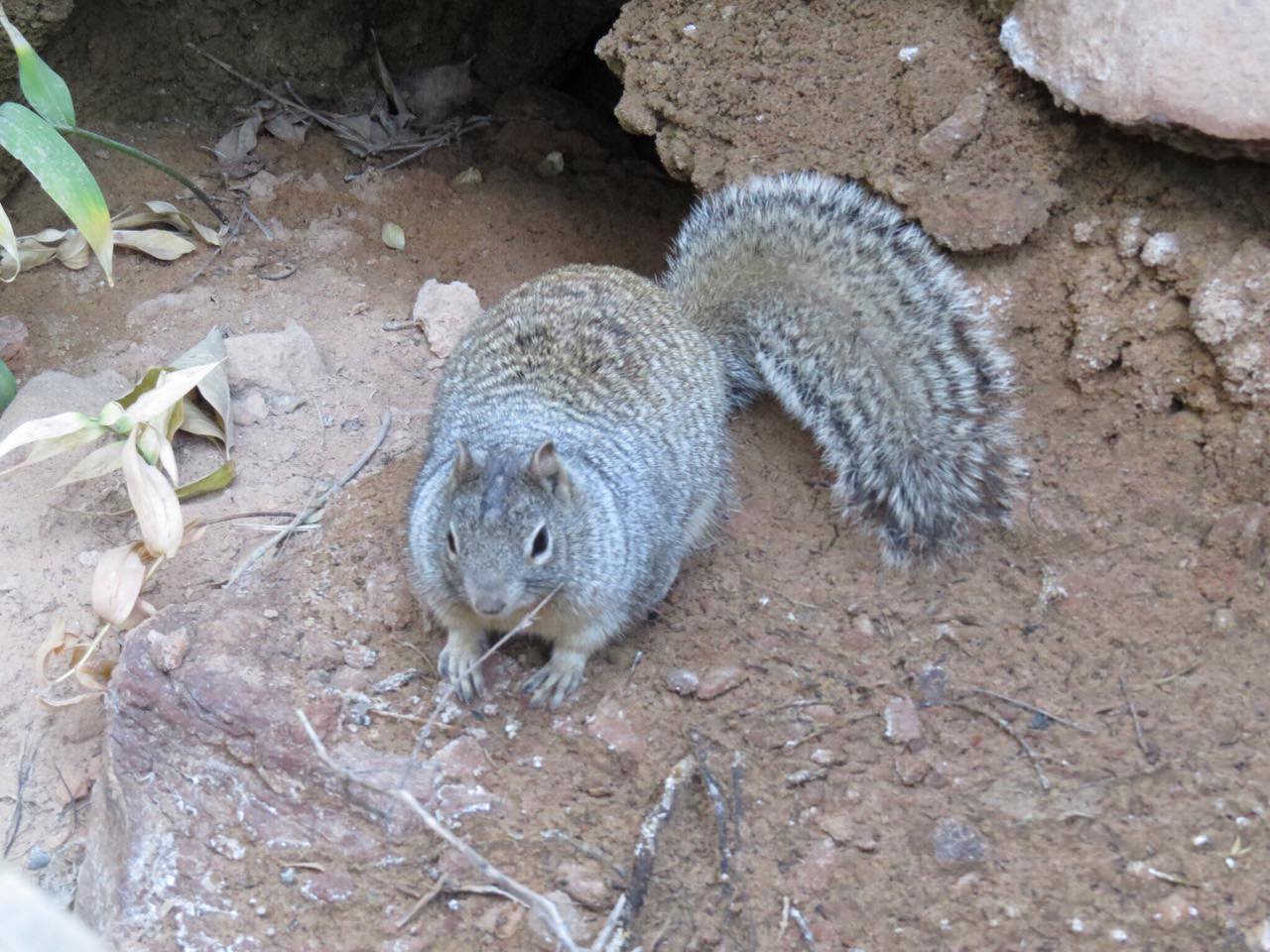
Along the walk were many paths leading to the river. Of course, we took every one of them in order to gain different views of the water and canyon. While not universally true, several sections of the river seemed to be tinted robin-egg blue, and it was remarkably beautiful against the gray and red of the rocks. We dipped a hand into the water at one stop and it wasn’t something we needed to repeat—it was cold.
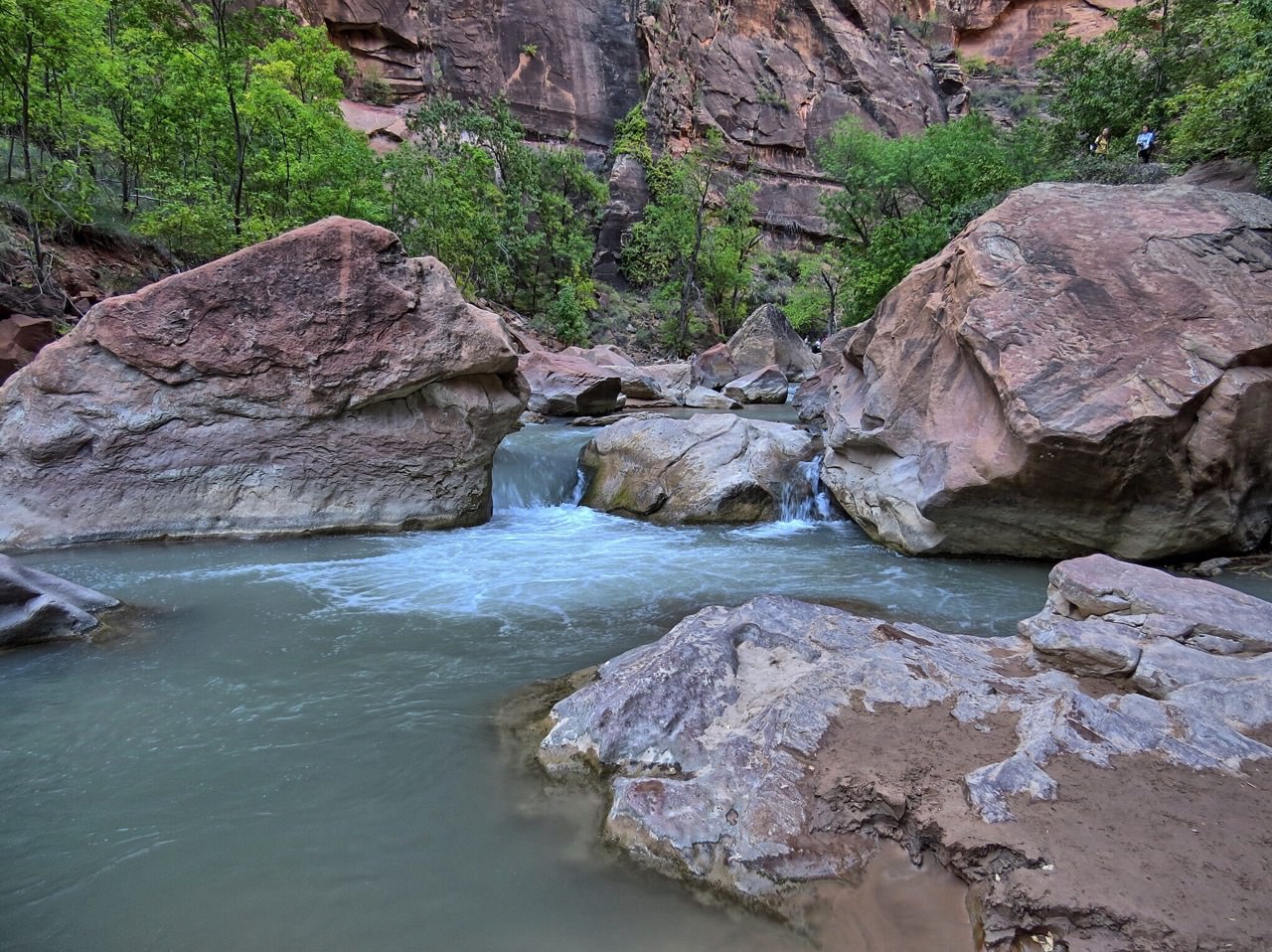
Even with the river, we were surprised by the lush vegetation. Deciduous trees, grasses and ferns were prevalent, and hanging gardens clung to the sloped walls, fed by trickling water seeping through the rock.
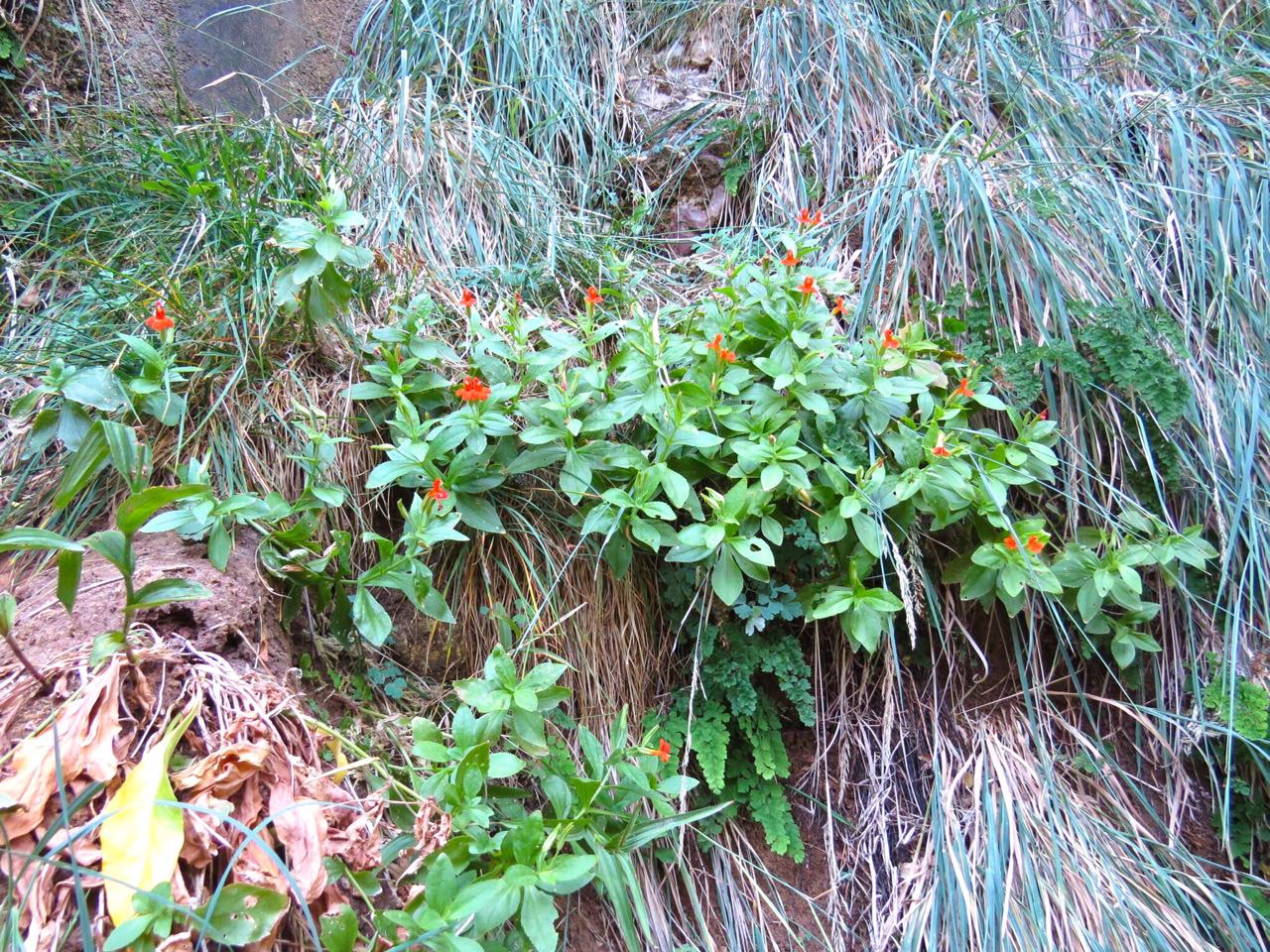
This walk is also know as the Gateway to the Narrows, because it ends where the “bottoms up” portion of the hike into the Narrows begins. Many people had congregated on an exposed portion of the rocky riverbed by the time we had arrived, taking pictures, seeing how long they could stand in the cold water, and just admiring the view. I walked to the very edge of the riverbed, where one more step would have submerged my boots in the water, and gazed into the mouth of the Narrows. Groups of people were returning and I wondered what it would have been like to explore further. While one of Zion’s most iconic features, a hike into the Narrows wasn’t something on our list due to time constraints. I wondered if it was something I would regret not experiencing.
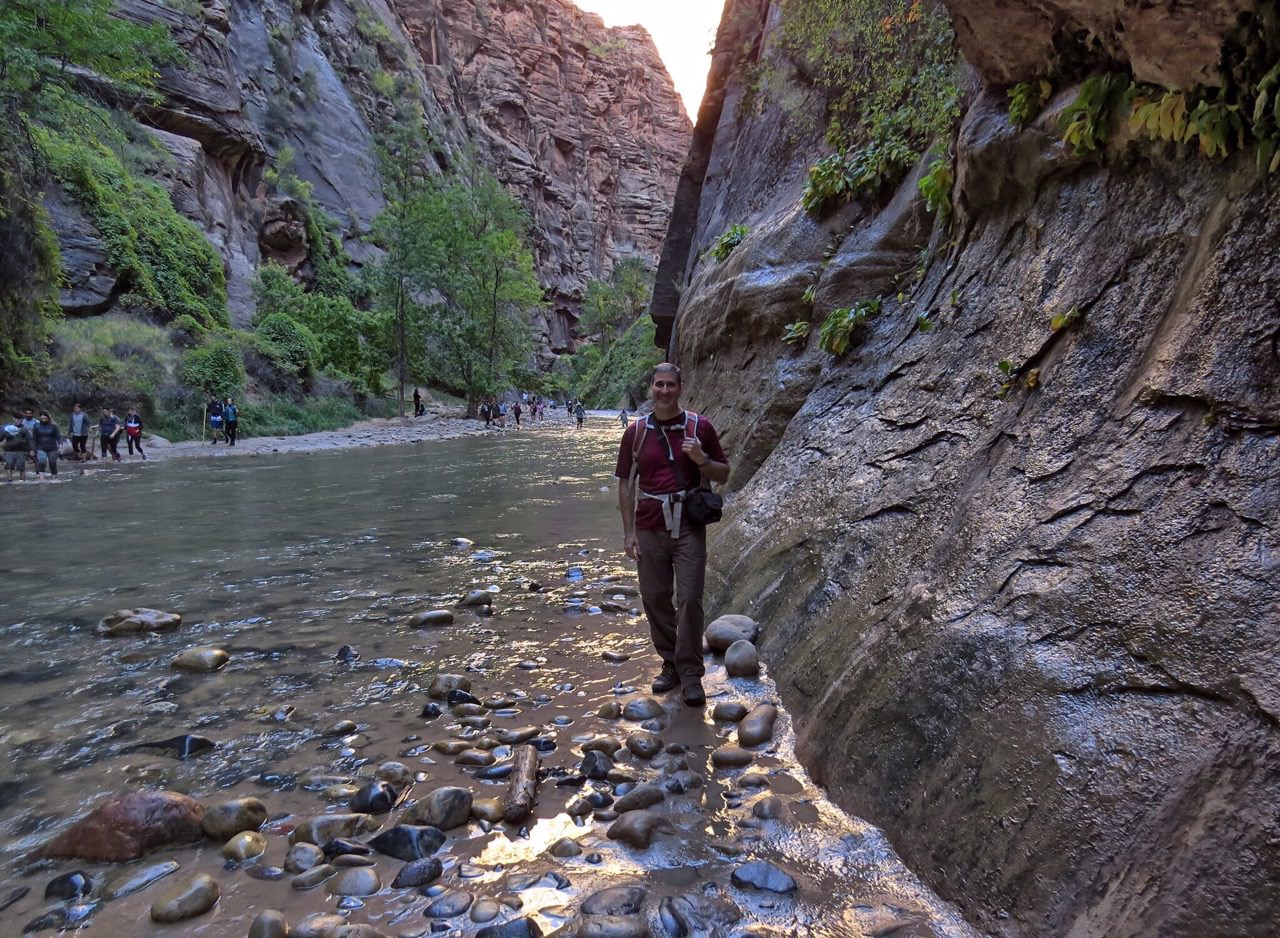
After several minutes, we began the walk back, continuing to marvel at all around us. I tried to record it to memory by stopping periodically, listing to the rush of the water and the movement of the trees, and inhaling the slightly damp air.
Court of the Patriarchs
It was getting late when we reached the shuttle stop. The sun had started to go down, the air was cooling further, and the shuttle service was warning visitors about its last pick-up times. We decided that there was time to make one stop on the way out of the canyon, at the Court of the Patriarchs. A short, paved walkway led us to an overlook of the namesake peaks.
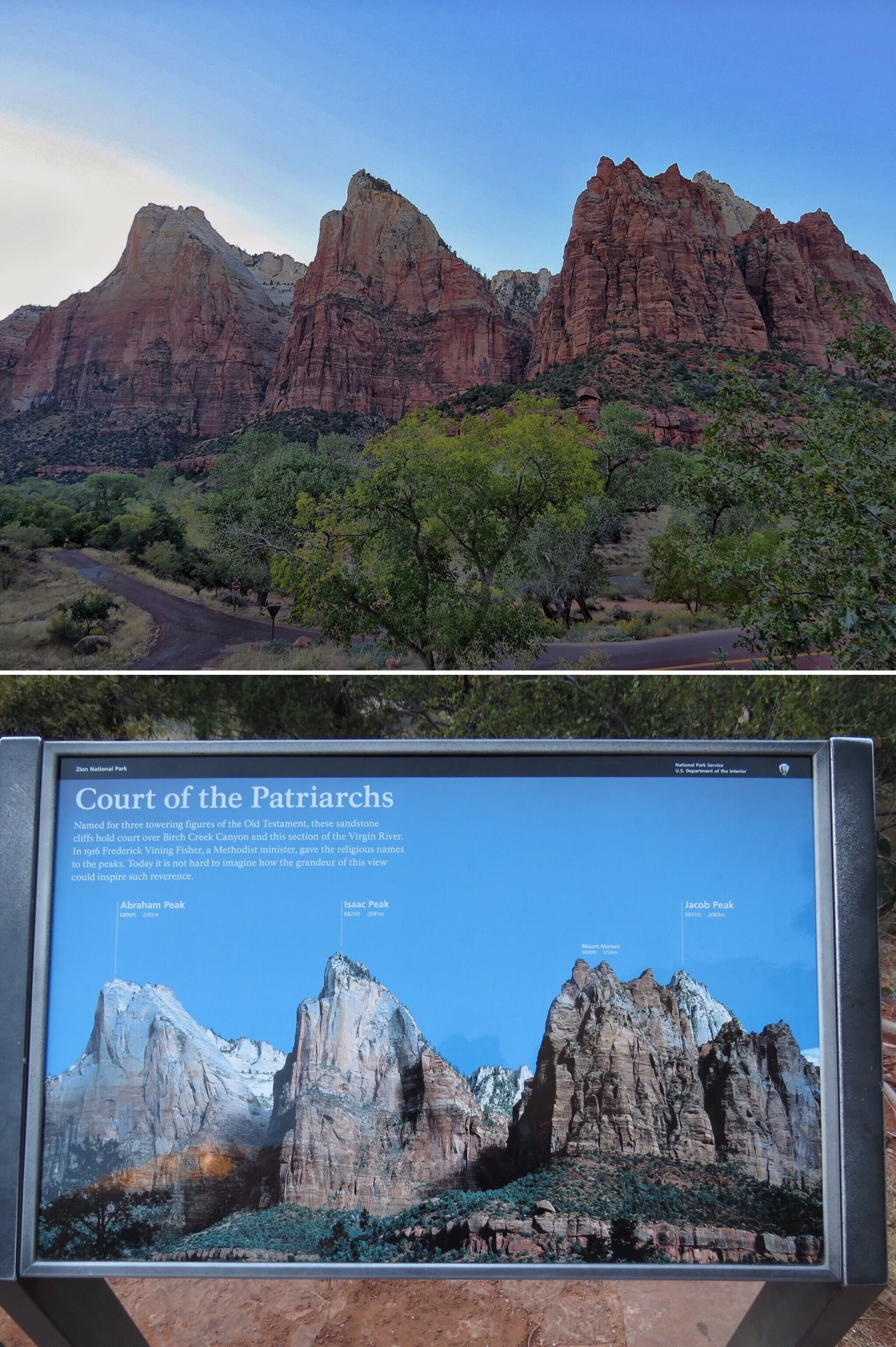
We returned to the shuttle station and within minutes were heading back to the visitor center.
First Impressions
As we began our drive back to the hotel, we reflected on our first day in Zion. Many of the parks we’d visited before had provided an immediate first impression. Zion was more elusive, and as we talked it distilled down to two primary reasons.
First, Zion felt crowded. Waiting in line at the visitor center, riding the shuttle, walking the Riverside Walk—every activity was done en masse. It was hard to feel like we were in a wilderness.
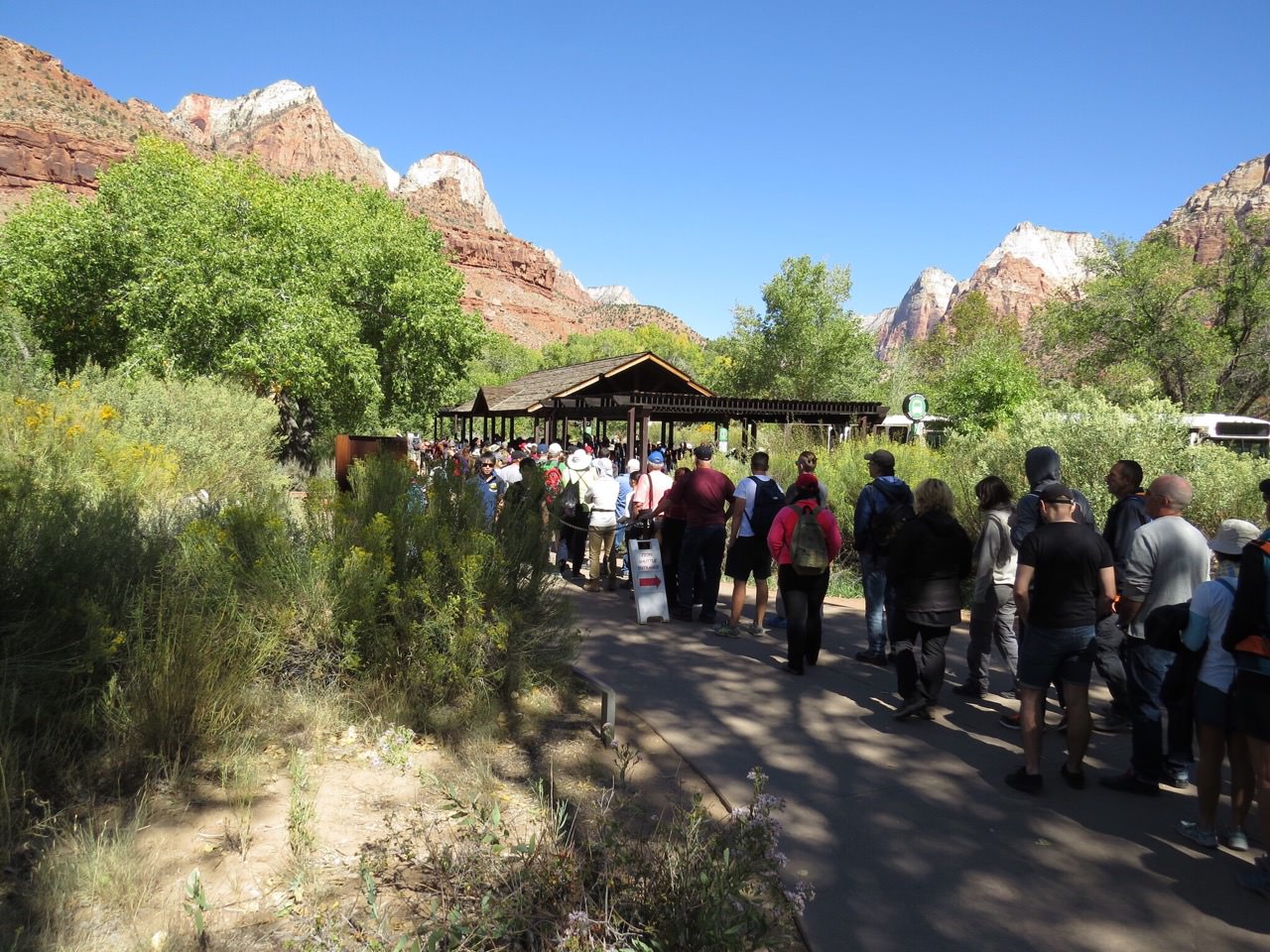
Second, the shuttle system closed us off from the experience, putting us in a box filled with people (and if you found yourself standing in the aisles it was impossible to admire the scenery). But the reality is that the shuttles are an absolute necessity. There is no way the one main road traveling the canyon would be able to handle the traffic that would result from tens of thousands of visitors. It’s a good system and it works well, but it does affect ones immersion into the park.
Still, we remained very excited to be there and extremely motivated to explore further.